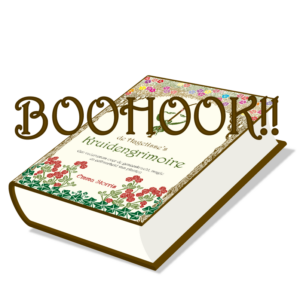
There are two plants in this book with celandine as part of their common name in English, lesser celandine and greater celandine. Although their names would suggest otherwise, these two are not related. In Dutch, their names do not even resemble each other. They belong to different families and do not look alike either, apart from the colour of their flowers. One is edible, while the other is definitely not.
They are native to the area I was born, so I have known them both for as long as I can remember. And they have different properties as well. Hence, I work with each of them and they both ended up in my big book. This chapter tells you about greater celandine, Chelidonium majus.I remember well the time my cousin had a wart and my grandmother taking him by the hand towards a plant at the back of the garden. It literally grew in the fence and had yellow flowers. My grandmother broke off a piece of the plant and marked the wart with the sap that came out of the stem. Then she instructed my cousin to dab the wart at least three times a day with the juice of this plant. After a while, the wart was completely gone. That was my first encounter with greater celandine.
Later I found out that greater celandine has much broader medicinal properties. Like many plants with yellow flowers, it has an impressive effect on the liver and gallbladder. Among others, it relaxed the smooth muscle cells and it does that in other organs as well. This makes it useful for all kinds of disorders in which cramping plays a role. Think of asthma, stomach and intestinal cramps and related indications. Greater celandine has been used for eye diseases since ancient times.
The magical properties of greater celandine are extensive. It protects you in general and during wars specifically. With this plant by your side, success is guaranteed. It also ensures that you do not get stuck, literally and figuratively. Furthermore, greater celandine can predict the course of a disease. In short, it is a valuable ally for any herbalist.
Greater celandine has a strongly branching and at the same time small rhizome. The rhizome is thick and succulent. Greater celandine can proliferate, but not strongly. The stems are hollow and fragile and covered in woolly hair. They secrete a foul-smelling dark yellow to orange juice when they are crushed or broken off. The leaves are green on top and blue-green underneath and imparipinnate – in this case there are five or seven leaf segments – or scalloped.
Greater celandine has yellow flowers of 2 to 2.5 cm in size with four petals that are arranged decussately. The flowers stand in loosely arranged umbels in the leaf axils at the end of the stems and have a large number of yellow stamens. After flowering, thin legumes appear containing small black seeds.
Ants love the white appendages of the seeds, dragging the seeds everywhere and helping the plant spread.
Greater celandine seems to like being around people. You often see this plant near buildings.
The name Chelidonium comes from swallow. Greater celandine is associated with swallows, because it emerges when the swallows return in spring and dies when swallows leave for the winter.
Alchemists put a different spin on that name. They turned it into coeli donum, or gift from heaven, because they thought the plant contained gold due to the colour of its juice.
Basic membership is free. A plant monograph contains:
It's not allowed to copy content of this website
and view hidden content
